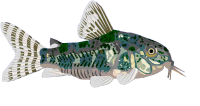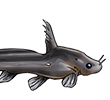That's all very nice, Larry. Nicely stated and truly appreciated. But if that's true - why did you stick it up my butt with such a nasty, condescending post? Why couldn't you post this instead of the other? Is it that your basic nature IS to be confrontational and argumentative? That's just not my cup of tea, so I can't and won't get into a p*ssing match with you. Too old, sick and tired. Sorry. If you were looking for blood sport, you engaged the wrong guy. Life's too short.apistomaster wrote:Hello Frank,
I only know you from what I have read in your posts and I can tell when someone is a an accomplished aquarist and that I can learn from the experiences they choose to share.
I have found what you have shared to be very useful and on target. Therefore I have appreciated what I gained from what you have shared.
I am also an accomplished aquarist but I do not have the same depth of experience in the art of raising wild Corydoras as you. My expertise is deeper in other areas.
I quite understand your position on whether one is respected or not is of no consequence. Some people do care and are even pleased to learn they have helped others.
I agree that an aquarium is never an accurate simulation of a fish's biotope. We do what we can and if it is near enough sometimes our fish reproduce.
That is the reward to a breeder of challenging fish.
As far as my expertise: I've said this before and I'll say it again for the last time. Here's the secret to my having spawnied 25 different specie of Cory in 7 short years. I put them in water, I feed them, I do "normal" water changes and I hope. That's it. I have no tips, tricks, secrets or anything else to offer. Now, you may regard that as sarcastic as it probably does not jibe with your belief system. I can't help you with that. Reality is what it is.
These fish have spawned without my help for hundreds of millions of years. I would never be so humanly arrogant to assume that I have some "power" over a living creature. When they want to spawn, they spawn. I let them live their lives with as little interference from me as possible.
If I was so good at this, perhaps my colony of C. condiscipulus might have spawned after a 7 year wait. They haven't.
Yours in peace! - Frank
P.S. Must remember to correct the spelling on this pic.







